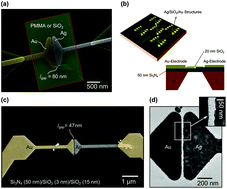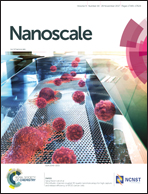Embedded nanoparticle dynamics and their influence on switching behaviour of resistive memory devices†
Abstract
Resistively switching Conductive Bridge Random Access Memories (CBRAMs) rely on the controlled formation and dissolution of metallic filaments within a solid insulator, and are emerging building blocks for beyond von Neumann computing architectures and neuromorphic computing. A lack of understanding of the underlying switching mechanisms currently prevents further device utilisation and optimisation. We present a study of lateral and vertical CBRAM model devices that allow us to systematically relate important switching properties and their statistics to a direct characterisation of their critical switching region by scanning and transmission electron microscopy, i.e. to the physical nature of metal filaments and inclusions on all relevant length scales. We find that filaments are composed of metallic clusters and show how filament dynamics link to migration effects of embedded nanoparticles under voltage bias stress. The formation of metal clusters is promoted by a dynamic interplay of cation mobility and redox rate during switching. These clusters are not completely removed from the switching material matrix upon RESET and appear to grow by consumption of smaller clusters. We discuss in detail the interfacial stress of the nanoparticles in the context of their interaction with the switching material and ambient atmosphere. This allows us to consistently interpret previous literature and to suggest future device improvements.



 Please wait while we load your content...
Please wait while we load your content...